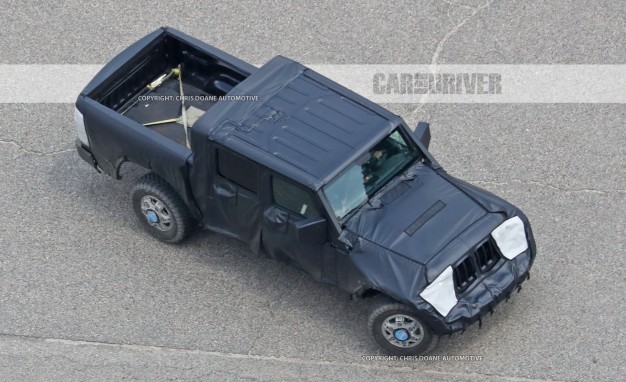
kscarbel2
Moderator-
Posts
18,886 -
Joined
-
Days Won
114
Content Type
Profiles
Forums
Gallery
Events
Blogs
BMT Wiki
Collections
Store
Everything posted by kscarbel2
-
Ford to Cancel Mexican Plant - Invest $700mm in Michigan Plant
kscarbel2 replied to General Ike's topic in Odds and Ends
Auto executives, with eye on Trump, highlight U.S. investments Reuters / January 9, 2017 Global auto executives at the Detroit auto show are highlighting their investments in the United States, mindful of President-elect Donald Trump's attacks on automakers for building vehicles in Mexico. Fiat Chrysler Automobiles CEO Sergio Marchionne said on Monday that uncertainty over Trump's trade and tax policies could lead automakers to delay investments in Mexico, and he confirmed plans to create 2,000 jobs at Fiat Chrysler's U.S. factories. "The reality is the Mexican automotive industry has now for a number of years been tooled-up to try and deal with the U.S. market. If the U.S. market were not to be there, the reasons for its existence are on the line," said Marchionne. FCA announced on Sunday it would spend $1 billion to retool factories in Ohio and Michigan to build new Jeep sport utility vehicles, as well as a pickup truck, and potentially move production of a Ram heavy-duty pickup truck to Michigan from Mexico. On Monday, Ford confirmed it would build a new Ranger pickup and a new SUV under the storied Bronco name in Wayne, Michigan (replacing Focus/C-Max production that is shifting to Hermosillo, Mexico). During the 2016 presidential campaign, Trump criticized Ford's announcement last year that it would move Focus production to Mexico. Last week, Ford scrapped plans to build a new $1.6-billion Focus plant in San Luis Potosi, Mexico, and said it would invest $700 million at its Flat Rock plant in Michigan. Executives at Ford, Fiat Chrysler and other automakers at the auto show all claimed their investment decisions were driven by business considerations, not Trump's comments. Most major automakers in the U.S. market have substantial vehicle-making operations in Mexico, as well as complex networks of parts makers that supply their factories in the United States and support jobs and investment in states such as Ohio and Michigan. Trump praised Ford and Fiat Chrysler's latest announcements on his Twitter account on Monday. "It's finally happening - Fiat Chrysler just announced plans to invest $1BILLION in Michigan and Ohio plants, adding 2000 jobs," Trump said. He added: "Ford said last week that it will expand in Michigan and U.S. instead of building a BILLION dollar plant in Mexico. Thank you Ford & Fiat Chrysler." INVESTING IN THE UNITED STATES Trump's focus on U.S. automotive jobs, and uncertainty over what policies he may introduce, have been central topics of discussions among industry officials at the annual auto show. Companies ranging from General Motors to Honda to Daimler used the show to highlight new U.S. investments. Toyota will invest $10 billion in the United States over the next five years, the same as in the previous five years, North America Chief Executive Jim Lentz said Monday. Honda will build a new hybrid model that does not have a gasoline counterpart in its lineup. The hybrid will be made in the United States in 2018 at an existing plant, and Honda said it would boost investment at its transmission plant in Georgia. Daimler CEO Dieter Zetsche said Sunday the German automaker planned to invest another $1.3 billion to expand SUV production at its Alabama plant. Volkswagen plans to invest $7 billion in the United States between 2015 and 2019. It is weighing whether to build an electric SUV in the United States or Mexico, said North America Region CEO Hinrich Woebcken on Sunday. Volkswagen has had a plant in Mexico for 50 years and it is not shifting any jobs to Mexico from the United States. "We do not make our investment decisions based on administrative cycles," Woebcken said. FCA's Marchionne said Monday his company's decision to invest in expanded truck production in the United States "was in the works and has been in the works for a long period of time." Marchionne wanted to get out the news about adding jobs and investment in the United States in case the company encountered more criticism from Trump. Marchionne said he has not made a decision on whether to move production of certain Ram heavy-duty pickups from Mexico to the United States, in part because of uncertainty about tariffs. "There's no commitment to move the heavy-duty. If tomorrow morning President-elect Trump decides to impose a border tax on anything that comes up from Mexico, then we’ll have to adjust." Also on Monday, Toyota's Lentz warned that a "border adjustability tax," could add $1,000 to the cost of a Kentucky-built Camry sedan, because it has foreign-made parts. Ford Chairman Bill Ford Jr and General Motors CEO Mary Barra have, separately, spoken with Trump in recent days. Ford said he has been "in relatively frequent contact with him." He said he was encouraged that overhauling the corporate tax code was high on Trump's agenda. Barra on Sunday said tax reform and "streamlining regulations ... are just two areas that would be extremely beneficial" for Trump to address. Trump has criticized GM for building cars in Mexico while laying off workers in the United States. Barra, who is on an advisory committee to Trump, said decisions about where to build specific vehicles are made "two, three four years ago." Overall, she said of Trump, "we have much more in common" than areas of disagreement. Marchionne said he had not spoken with Trump or anyone on the presidential transition team. -
Ford to Cancel Mexican Plant - Invest $700mm in Michigan Plant
kscarbel2 replied to General Ike's topic in Odds and Ends
Bill Ford: Scrapping Mexico Plant Is a Business Decision Bloomberg / January 10, 2017 Ford Chairman Bill Ford discusses the Detroit auto industry, Donald Trump’s trade policies, the president-elect’s nomination of Elaine Chao for Transportation secretary and the company’s decision to scrap plans for a new plant in Mexico. He speaks with David Westin on “Bloomberg Markets” from the North American International Auto Show in Detroit, Michigan. Video - https://www.bloomberg.com/news/videos/2017-01-09/bill-ford-scrapping-mexico-plant-is-a-business-decision -
This video gives me the impression that Trump indeed imitated the handicapped Pulitzer Prize-winning reporter (Serge F. Kovaleski), who suffers from arthrogryposis (https://en.wikipedia.org/wiki/Arthrogryposis). That Mr. Trump would deny the event is troubling, and his action beneath the dignity of the presidency. Leading the world's greatest country, I myself do hold our presidents to a higher standard. Trump's action was not indicative of the mature behavior reasonably expected from a presidential hopeful.
-
Ranger & Bronco return confirmed, and a mid size van?
kscarbel2 replied to TeamsterGrrrl's topic in Trucking News
If the Bronco is merely a rebadged Ford Everest, I'll be first in line. However, if it is a Bronco-like body on the global Ranger platform, I'll likely pass. "Bronco" is a signature Ford product that the automaker indeed should bring back. But the Bronco and Everest are two different flavors. -
Ranger & Bronco return confirmed, and a mid size van?
kscarbel2 replied to TeamsterGrrrl's topic in Trucking News
A mid-sized van means the Transit Custom (windowless cargo version) and Transit Tourneo (passenger version) are finally coming to the US market. I mentioned this superb product here................http://www.bigmacktrucks.com/topic/47453-new-man-tge-and-volkswagen-crafter-launched-at-iaa-2016/#comment-350078 New for 2012, the mid-sized Transit is produced by Ford Otosan in Turkey. There are actually four size vans in the Transit range, the smallest being the Transit Courier...........http://www.ford.co.uk/CommercialVehicles/Transit-Courier -
Titan to be Discontinued
kscarbel2 replied to Mackpro's topic in Modern Mack Truck General Discussion
I have an idea what's going on with the D16. At any rate, this is what Volvo announced within the last 12 months. Production of upgraded D11 and D16 engines begins in January, while a D13 with turbo compounding begins production in mid-2017. http://www.bigmacktrucks.com/topic/45838-volvo-trucks-north-america-press-conference-shippensburg-pa/#comment-337812 The 2017 Mack MP8 will be available for order in April 2016, while the 2017 MP7 and MP10* engines will be available for order in July 2016. The Mack MP8 with turbo compounding will be available for order in October 2016. http://www.bigmacktrucks.com/topic/44945-new-mack-engines/#comment-331766 Long noted that no major changes are being made to the 2017 D16 model compared its previous 2014 iteration, with the D16 maintaining its iron-zeolite catalyst, eliminating the need for sulfur regeneration. Production for the tweaked 2017 D16 model begins in January 2017. http://www.bigmacktrucks.com/topic/44540-volvo-trucks-announces-us-market-common-rail-other-powertrain-enhancements/#comment-328779 -
FBI Arrests Volkswagen Executive on Conspiracy Charges in Emissions Scandal The New York Times / January 9, 2017 The Federal Bureau of Investigation (FBI) has arrested a Volkswagen executive who faces charges of conspiracy to defraud the United States, marking an escalation of the criminal investigation into the automaker’s diesel emissions cheating scandal. Oliver Schmidt, who led Volkswagen’s regulatory compliance office in the United States from 2014 to March 2015, was arrested on Saturday by investigators in Florida and is expected to be arraigned on Monday in Detroit. Lawsuits filed against Volkswagen by the New York and Massachusetts state attorneys general accused Schmidt of playing an important role in Volkswagen’s efforts to conceal its emissions cheating from United States regulators. Starting in late 2014, Schmidt and other Volkswagen officials repeatedly cited false technical explanations for the high emissions levels from Volkswagen vehicles, the state attorneys general said. In 2015, Schmidt acknowledged the existence of a so-called defeat device that allowed Volkswagen cars to cheat emissions tests. Volkswagen eventually said that it had fitted 11 million diesel cars worldwide with illegal software that made the vehicles capable of defeating pollution tests. The software enabled the cars to sense when they were being tested for emissions and turn on pollution-control systems to curb emissions at the cost of engine performance. But those controls were not fully deployed on the road, where cars spewed nitrogen oxide at up to 40 times the levels allowed under the Clean Air Act. James Liang, a former Volkswagen engineer who worked for the company in California, pleaded guilty in September to charges that included conspiracy to defraud the federal government and violating the Clean Air Act. But Schmidt’s arrest brings the investigation into the executive ranks. The arrest came as Volkswagen and the Justice Department neared a deal to pay more than $2 billion to resolve the criminal investigation into the emissions cheating. The company or one of its corporate entities is expected to plead guilty as part of the deal. The settlement could come as early as next week. American prosecutors had traveled to Germany in recent months to interview Volkswagen executives, according to German prosecutors. The criminal case against Volkswagen, and the potential guilty plea, set it apart from other recent auto industry investigations. In settlements with General Motors and Toyota over their handling of safety defects, for example, the companies agreed to pay large fines, but did not plead guilty. Prosecutors are also mulling criminal charges against Takata, the Japanese manufacturer under criminal investigation for its defective airbags. Volkswagen has already agreed to pay up to nearly $16 billion to resolve civil claims in what has become one of the largest consumer class-action settlements ever in the United States, involving half a million cars. Under the settlement, most car owners have the option of either selling their vehicles back to Volkswagen, or getting them fixed, provided the automaker could propose a fix that satisfied regulators.
-
Big Rigs / January 9, 2017 The five most famous Hollywood trucks turned up to small fleet owner Brad Wike's farm in September last year, in North Carolina over in the States. From Rubber Duck's 1977 Mack to the big bad Peterbilt 281 that started it all in the hit movie Duel. .
-
Stage 5 Results MAZ Trucks Press Release / January 7, 2017 The fifth stage of the rally-raid Dakar 2017 is already behind. Local landscapes are striking in their beauty, while the local climate brings about changes in the Dakar’s route. The managerial staff of the rally-raid decided to shorten the stage 5 with finish at the first special stage, that was the 219th km of the route. The competitors did not negotiate the second part of the special stage after the neutralization zone, as the tracks on the way to Oruro were blurred. According to Marc Coma, Dakar sporting director, it was a difficult decision, but in such a race like Dakar you should always be on the alert. So the stage 5 Tupiza – Oruro allowed our crews to enter top-10 thus taking higher positions in general ranking. Siarhei Viazovich's crew no. 511 (S.Viazovich/P.Haranin/A.Zhihulin) – 5th place (17:43 time gap) at the stage; 17th position (03:24:37 time gap) in general ranking. Alexander Vasilevski's crew no. 522 (A.Vasileuski/D. Vikhrenka/A. Zaparoshchanka) – 6 th place (18:21 time gap) at the stage; 11th position (01:13:23 time gap) in general ranking. Alexey Vishneuski's crew no.533 (А.Vishneuski/М.Novikau/А.Neviarovich) – 8th place (22:18 time gap) at the stage; 19th position (04:35:44 time gap) in general ranking. .
-
Stage 4 Results MAZ Trucks Press Release / January 6, 2017 The fourth stage of the rally-race Dakar-2017 has finished. The total lenght of the stage was 521 km with a special in 416 km. Dakar competitors started in Argentinian city San Salvador de Jujuy while their finish was in Bolivian Tupiza as well as the major part of the 4th stage took place in Bolivian territory. The competitiors faced lack of roads and dunes along this route. Siarhei Viazovich's crew no. 511 finished in the 36th place. Now they occupy the 21st position in the general ranking. Alexander Vasilevski's crew no. 522 finished in 16th place and is at 15th position in the general ranking. Alexey Vishneuski's crew no.533 finished in 37th place and is at 26th position in the general ranking. Ahead is the next stage from Tupiza to Oruro. .
-
Organizers Cancel All Competition Due to Inclement Weather. Teams Drive to La Paz on a Liaison Route, Concluding the First Half of the Rally. On January 7, Stage6 Oruro (Bolivia) - La Paz (Bolivia) Liaison: 227km Total: 227km At 10 pm, Jan. 6, organizers announced that they will be canceling all competition for Jan. 7. This was due to the fact that many racers were arriving late at the bivouac because of inclement weather, and road surfaces on the SS scheduled for Jan. 7 had become too rough due to the ongoing rain. All vehicles were redirected to a liaison route that took them directly to La Paz. This meant that competition for the first half of the rally concluded on Jan. 6. Tomorrow, on Jan. 8, team crews will have a day of rest, and prepare for the second half beginning on Jan. 9. La Paz, the capital city of Bolivia, is situated in a bowl-shaped basin at an elevation of 3200 to 3600m. This having been the first time for the Dakar Rally to make a stop in La Paz, the sides of the liaison route were packed with hundreds of thousands of La Pazians who came to get a glimpse of vehicles competing in the rally. A podium had also been set up in the city center. It was around 6 pm when the HINO500 Series trucks arrived at the bivouac which was set up on a military camp near the bottom of the basin. In the drizzling rain, mechanics were quick to begin servicing the trucks with a focus on fully refreshing the trucks in preparation for the second half of the rally. This intervening day of rest is actually a very busy one for mechanics. Yoshimasa Sugawara: We got bogged in the SS on Jan. 6 and it took us two hours to free the truck. I was feeling symptoms of altitude sickness, perhaps because we worked too hard to break loose, but I'm feeling better now after breathing oxygen and resting at the bivouac. I will get my physical condition up to speed during the rest day tomorrow. Mitsugu Takahashi: There were quite a few areas where navigation was challenging and we got lost a couple of times. The first half of the rally is already over, so time certainly does zip by. Teruhito Sugawara: Given this weather, there wasn't much the organizers could do but to cancel the SS. This consequently made the first half shorter, but the second half will continue to meet us with challenging segments and we are highly motivated to keep going. I think our performance up to this point has partly been the result of upgrades that we made to the truck, but I also think that the increased level of navigation difficulty has been an advantage for the more experienced teams, including ourselves. Hiroyuki Sugiura: It seems like I'm also having some mild symptoms of altitude sickness. I'm eager to race and I can't wait for the second half to begin. .
-
Car 2 Joins the Top 10 Group in the SS for the First Time This Year. Organizers Cancel the Latter Half of the Day Due to Rain. On January 6, Stage5 Tupiza (Bolivia) - Oruro (Bolivia) Liaison: 54km, SS: 219km, Liaison: 320km Total: 593km The itinerary for Jan. 6 took contestants from Tupiza to Oruro, both in Bolivia, where teams raced a 219km SS in the intermountain areas near Uyuni. While the original plan called for two SSs―with a neutral zone near the town of Uyuni in between―for a total SS distance of 438km, organizers were forced to cancel the second half as the terrain was seriously affected by rain that had been falling for the last few days. As a result, all contestants headed for the bivouac in Oruro on a liaison route. After climbing to 4000m altitudes in the first half of the day, contestants raced in some areas that featured farm fields and field ridges built of sand. The terrain was generally moist due to the rain and there were many slippery areas. HINO TEAM SUGAWARA's Teruhito Sugawara and Hiroyuki Sugiura duo continued to maintain their cool as they took on this SS. They drove error-free in areas that were particularly challenging for navigation, and finished at 9th place overall―joining the top ten groups for the first time in this year's rally. Car 1 piloted by Yoshimasa Sugawara and Mitsugu Takahashi delivered a solid performance and finished 38th overall in the SS. As of this writing at 9:30 pm, Car 1 is still on its way to the bivouac on the liaison route. Based on these results, Car 2 boosted its accumulated ranking as of Jan. 6 to 12th place (preliminary), and Car 2 was at 32nd. The team continues to maintain its 1-2 standing in the Under 10-litre Class. The bivouac in Oruro was set at an elevation of 3500m. Heavy downpours began later in the afternoon, turning the ground into a mud field. Numerous vehicles were bogged and struggling to break free. With these factors combined with the severe cold, mechanics had to work under extreme conditions servicing the trucks. Organizers announced that they will be shortening the stage for tomorrow, Jan. 7, again due to the rain. Start times will be pushed back by two hours and the start line will be moved to the 21.35km point. CP4 will be the new finish line for the day, and from there contestants will take a paved liaison route to La Paz. Teruhito Sugawara: This was a risky SS as the rain made the surfaces quite slippery. I think our good performance comes from a combination of two factors: We are driving a better truck, and navigation is more difficult this year. Hiroyuki Sugiura: There are waypoints along the way that you won't be able to check unless you followed the road book to the tee. I'm happy that we were able to check all of these. Our truck is doing just fine. .
-
Car 2 Delivers Stunning Performance in the Full-Blown Highland Stage, Finishing the SS at 13th Place. Car 1 Finishes Day-5 in 34th Spot. On January 5, Stage4 San Salvador de Jujuy (Argentina) - Tupiza (Bolivia) Liaison: 103km, SS(A): 286km, Neutral Zone: 1km, SS(B): 130km, Liaison: 2km Total: 522km On Jan. 5, contestants started off from Jujuy before crossing the border into Bolivia. After driving a 103km liaison segment, they raced SSs that traversed the border for a total SS distance of 416km. This was a full-blown highland stage set at altitudes of between 3000m and 4000m+ where contestants faced mountain crossings and numerous off-piste areas, as well as dunes in hilly sandy terrain with grassy outcrops. Car 2 was the 21st truck to start the SS and delivered a great run which propelled it to 8th place by the first checkpoint (CP1). The truck subsequently maintained its position in 12th place, finishing in high rankings at 13th overall and top in the Under 10-litre Class. Competing neck and neck with the leading group of larger trucks in the overall category, this performance brought Car 2’s accumulated standings as of Jan. 5 to 14th overall and first in the Class in an amazing display of the HINO500 Series truck's potential. Meanwhile, Car 1 lost some time at one point in the race searching for a waypoint, finishing the SS at 8:22 pm at 34th place overall. The clock was past 9:00 pm by the time the truck arrived at the bivouac. The itinerary for Jan. 6 will take contestants through highlands from Tupiza to Oruro where they are scheduled to race a total of 438km of SS. Yoshimasa Sugawara: Rain started to pour down when we were at the bottom of a dry river bed, and we were taken off guard when we saw a large river of water flowing our way. While we made some course errors, we maintained our pre-planned pace to make a solid finish. Mitsugu Takahashi: It was difficult to find the hidden GPS waypoints that the organizers introduced this year, and we lost some time there. It would be a great help if we could start a bit earlier. Teruhito Sugawara: Although I think luck had a little bit to do with our 13th place finish in the SS, the truck has been delivering the performance that we were expecting it to. The course for the day was quite tough and the sands were really soft. Tomorrow, we will give it our best again to give the leading group a run for their money. Hiroyuki Sugiura: Navigation was quite difficult in the off-piste sections early in the day. We also had to run our oxygen enricher as we faced higher altitudes. There were a lot of trucks stopped on the course for one problem or another, perhaps due to the thin oxygen. Seiichi Suzuki: Last night, we replaced the water pump on Car 1, and the belt tensioner on Car 2. The trucks are doing very well and we haven't had to use our welder so far. Nakamura Masaki: I'm sure the mechanics' experience in the Silk Way Rally has been a great help, but I'm also sure that getting used to these conditions―including the intense heat on the first day and freezing cold of the highlands at night―is easier said than done. So I commend them for doing a great job. .
-
Waste concept: Mack tests out Wrightspeed electric powertrain
kscarbel2 replied to kscarbel2's topic in Trucking News
Mack Evaluating Wrightspeed Electric Powertrain for Refuse Industry Volvo Group Press Release / January 5, 2017 The Wrightspeed Route is a range-extended electric vehicle powertrain that helps reduce fuel consumption and vehicle maintenance costs because it uses electricity to deliver 100 percent of the vehicle’s propulsion. “As the clear leader in the refuse industry, Mack consistently seeks opportunities to pioneer new technology,” said Curtis Dorwart, Mack refuse product marketing manager. “We’re currently evaluating Wrightspeed’s powertrain technology to see how it can most benefit Mack’s refuse customers.” The system features an advanced plug-in-capable battery pack that enables a purely electric range of up to 24 miles. When the batteries’ charge is depleted, an 80 kW, fuel agnostic Fulcrum™ Turbine Generator, which can operate on natural gas or diesel fuel, recharges the batteries, enabling Route-equipped vehicles to have unlimited range with refueling. Additional recharging comes from the Route’s 730 kW regenerative braking system, which generates electricity as the vehicle comes to a stop. Regenerative braking helps reduce maintenance costs, as braking force – and subsequent brake wear – is significantly decreased. Electricity from the battery pack powers four Geared Traction Drive™ (GTD) electric motors, enabling the Route powertrain to power vehicles up to 66,000 pounds on grades as steep as 40 percent. With full torque available from zero rpm, the Route provides a driving experience comparable to diesel-powered trucks. -
Ford to Cancel Mexican Plant - Invest $700mm in Michigan Plant
kscarbel2 replied to General Ike's topic in Odds and Ends
Bloomberg / January 9, 2017 General Motors may test President-elect Donald Trump’s patience with its new GMC Terrain when the SUV heads to U.S. dealers this year from a factory in Mexico. GM currently makes Terrain and its Chevy Equinox stablemate at a plant in Ingersoll, Ontario. Moving Terrain/Equinox production to Mexico instead of the U.S. is partly a response to hyper competition among automakers seeking an edge through lower production costs. The 2015 labor agreement with the United Auto Workers union boosted wages and benefits for thousands of younger U.S. employees who previously made much less than veteran factory hands. Mexican autoworkers earn an average of $8.24 an hour in pay and benefits, compared with $46.35 an hour for those in the U.S. Canadian workers get similar compensation. Duncan Aldred, vice president of global GMC sales and marketing, said GM is using existing plants that can handle the production volume. “We have been planning this for a long time, and we’re using our existing footprint,” he said. GM has a lot riding on the new Equinox and Terrain. Small SUVs are a booming segment of the market and a big moneymaker for the company, so when GM planned the new versions, it decided to increase output from one factory to three -- adding the vehicles at two existing facilities in Mexico, according to a GM spokesman. The move is GM’s bet that more inventory will mean more new buyers, as well as a play to make more on each sale. Some of the added production in Mexico is earmarked for overseas. That’s partly because of Mexico’s 44 free-trade deals with other countries, which allow GM to export vehicles tariff-free to markets where it doesn’t have similar agreements, including Brazil, Colombia and the European Union. In late 2014, GM announced it would invest $5 billion in new plants in Mexico by 2018, creating 5,600 jobs south of the border. The Equinox and Terrain facilities, which also make other models, are roughly $1 billion of that. In 2015, GM said it is investing $5.4 billion in plants in the U.S. That same year, the UAW negotiated a four-year U.S. labor deal that gave veteran workers at GM, Ford and FCA two 3 percent raises and two cash payouts equal to 4 percent of their pay. Entry-level, or so-called Tier 2, workers -- who once started at less than $16 an hour and topped out at $20 -- now start at $17 and grow into the union’s traditional $29. Those at Ford and GM also get the top-flight health insurance of their The Equinox and Terrain could be a bigger deal than the Chevy Cruze. GM delivered 242,000 Equinox models to U.S. buyers in 2016 and 88,000 Terrains -- all from the Canada plant. Those SUVs aren’t cheap. The current Terrain starts at $24,000, and GMC offers an upscale Denali edition that starts at $34,000. GMC is a luxury brand, which Dziczek said makes sense for production in Mexico. “Mexican plants make small cars and luxury vehicles,” she said, “both of which have export potential.” . -
Automotive News/Reuters / January 8, 2017 Fiat Chrysler Automobiles will spend a combined $1 billion retooling its decades-old Warren Truck Assembly plant to build Jeep Wagoneers and Grand Wagoneers as well as its Toledo Supplier Park to one day build Wrangler-based Jeep pickups. Both retoolings are expected to be completed by 2020, and will add a combined 2,000 jobs, the automaker said in a statement today. The plant actions were not unexpected, and were first revealed during 2015 negotiations with the UAW and first reported by Automotive News Sept. 1, 2015. However, in its release Sunday, FCA did include one surprise: The automaker claimed that “an added benefit of the investment in Warren is that it will enable the plant to produce the Ram heavy duty truck, which is currently produced in Mexico.” Note: Second generation regular cab (BR) Dodge heavy duty pickups (2500/3500) were built at Warren during the 1990s. A historical footnote, the Sherwood and Hoover Road assembly lines at Warren produced Dodge medium and heavy trucks. That sentence would indicate one of two possibilities. One is that FCA had altered its plans to build the luxury-level Jeep Wagoneer and Grand Wagoneer on the same unibody platform as the next-generation Grand Cherokee and instead plans to build them as truck-based frame vehicles, like the Chevy Suburban. The other possibility is that the money will be used to add a second unibody line to Warren Truck Assembly, which has been building Dodge and later Ram pickups since the 1930s. FCA’s Toledo Assembly Complex currently builds the unibody Jeep Cherokee and the body-on-frame Jeep Wrangler, but on two separate assembly lines. A spokesman for FCA declined to comment. CEO Sergio Marchionne is scheduled to hold a series of private press conferences at the Detroit auto show Monday morning. FCA will display its Chrysler Portal concept minivan -- unveiled last week at CES in Las Vegas -- at the Detroit auto show Monday, but has no scheduled product press conference. In a written statement, Marchionne said “the conversion of our industrial footprint completes this stage of our transformation as we respond to the shift in consumer tastes to trucks and SUVs, and as we continue to reinforce the U.S. as a global manufacturing hub for those vehicles at the heart of the SUV and truck market. “These moves, which have been under discussion with [UAW President] Dennis Williams and the rest of the UAW leadership for some time, expand our capacity in these key segments, enabling us to meet growing demand here in the U.S., but more importantly to increase exports of our mid-size and larger vehicles to international markets. “The expansion of our Jeep lineup has been and continues to be the key pillar of our strategy. Our commitment to internationalize the Jeep brand is unwavering, and with these last moves, we will finally have the capacity to successfully penetrate markets other than the U.S. which have historically been denied product due to capacity constraints. In addition, these all-new products will reach new consumers, as well as those that have been part of the Jeep tradition,” Marchionne said. Trump impact FCA's announcement, meanwhile, upped the ante as automakers respond to threats from President-elect Donald Trump to slap new taxes on imported vehicles. The auto industry has a keen interest in getting relief from tough fuel economy rules enacted by the outgoing Obama administration. Many automakers plan to use the Detroit auto show to tout investments in the U.S. and a commitment to U.S. employment against the backdrop of Trump's criticism of automakers for shipping vehicles into the U.S. from Mexico. Most of the major automakers in the U.S. have substantial vehicle making operations in Mexico, as well as complex networks of parts makers that supply their factories in the U.S. and support jobs and investment in states such as Ohio and Michigan. FCA's investment decisions were not related to Trump's recent attacks Ford Motor Co., General Motors and Toyota Motor Corp. for building cars for the U.S. market in Mexico, people familiar with company's moves said on Sunday. The company had already signaled plans to expand truck and SUV production at its U.S. plants, and discontinued production of small- and medium-sized cars in two U.S. factories. FCA executives did not confer with Trump before making the decision on the new big SUVs and a Jeep pickup truck, according to a person familiar with the company's thinking. The same source said Marchionne wanted to get out the news about adding jobs and investment in the U.S. in case FCA encounters more criticism from Trump. Still, Fiat Chrysler's announcement landed as executives global auto industry executives gathered for the annual auto show in a climate of growing uncertainty about the trade and regulatory policies the new Republican administration will pursue. Trump, who will be inaugurated on Jan. 20, has talked about rolling back environmental regulations, and supporting corporate tax cuts -- moves automakers would welcome. He has just as explicitly warned that he will move to raise the costs of importing vehicles from Mexico, a policy industry executives said could hurt their businesses. U.S. investments Since Trump's election, automakers and other companies have played up their investments in the U.S. Last week, Ford scrapped plans to build a $1.6 billion plant in Mexico and invest $700 million in a factory in Michigan. Ford will still move production of Focus small cars to Mexico, but will instead cut total production of the cars by consolidating their assembly in an existing Mexican plant. Hinrich Woebcken, CEO of the North America Region for German automaker Volkswagen AG, told Reuters on Sunday the automaker plans to invest $7 billion in the U.S. between 2015 and 2019 and will start building its new Atlas SUV in Tennessee later this year. Volkswagen has had a plant in Mexico for 50 years and it is not shifting any jobs to Mexico from the U.S. "We do not make our investment decisions based on administrative cycles. Our business is really an 8-, 12-, 14-year horizon when we look at investments," Woebcken said on the sidelines of the Detroit auto show. .
-
Ford to Cancel Mexican Plant - Invest $700mm in Michigan Plant
kscarbel2 replied to General Ike's topic in Odds and Ends
BBC / January 9, 2016 BMW is spending $1 billion on a plant in Mexico. BMW sales and marketing director Ian Robertson told the BBC that the firm was "absolutely" committed its new plant in San Luis Potosi, which will make its 3 Series cars for sale across North America. He added that the company was investing $1 billion in its plant in South Carolina and pointed out that BMW was the biggest exporter of cars, in terms of value, from the US. "I don't think there's any discussion that BMW is not at home in the United States. Yes we are building a plant in Mexico. Yes we built a plant in Brazil last year. Yes we are building plants in other parts of the world as our capacity increases. But that's part of a normal strategic manufacturing direction," Robertson said. -
“There was one performance this year that stunned me. It sank its hooks in my heart. Not because it was good, there was nothing good about it, but it was effective and it did its job.” “It was that moment when the person asking to sit in the most respected seat in our country imitated a disabled reporter, someone he outranked in privilege, power and the capacity to fight back. It kind of broke my heart when I saw it and I still can’t get it out of my head because it wasn’t it in a movie, it was real life.” “This instinct to humiliate, when it’s modeled by someone in the public platform, by someone powerful, it filters down into everyone’s life because it kind of gives permission for other people to do the same thing.” “Disrespect invites disrespect, violence invites violence. When the powerful use their position to bully others we all lose.” Cecil B DeMille award recipient Meryl Streep at the Golden Globe Awards January 9, 2017 .
-
Tatra Trucks production leaps 56% year-on-year
kscarbel2 replied to kscarbel2's topic in Trucking News
. . . . -
Tatra Trucks Press Release / January 6, 2017 In 2016, the Tatra Trucks produced a total of 1,326 vehicles, with all manufactured vehicles already sold. As a result, it's the first time since 2008 that Tatra exceeded the symbolic production milestone of 1,000 vehicles and managed to increase production by more than 50 percent on a year-on-year basis. “We have proved to customers around the world that we are able to meet their demand for our unique Tatra vehicles and chassis,” says company CEO Martin Bednarz. The production in Tatra ran until the last working day of the year; the last score of vehicles were assembled in the week between Christmas and New Year. Both owners of the truckmaker highly appreciate the company’s results in 2016: Jaroslav Strnad and René Matera. Majority shareholder of Tatra Trucks Jaroslav Strnad says: “A big thanks from me and Rene Matera go not only to the entire management team of Tatra Trucks, but above all to the employees for all their efforts, especially in recent weeks and months.” The production and sales goals of Tatra Trucks for 2017 is 1,700 vehicles. From a long-term point of view, the company considers it realistic to supply the world market with about 2,000 vehicles a year in the segment of specialty trucks and chassis for various superstructures with the requirement for high durability and go-anywhere ability off-road. A substantial annual increase in company sales will correspond to the growth in production. “Our EBITDA will rise as well, it will approach the level of half a billion CZK in 2016,” said Finance Director Radek Strouhal. Chairman Petr Rusek’s comments on expectations for 2017: “Due to the expected development of the European economy, our growth in 2017 will be much more demanding than in the last two years. However, thanks to a specific product and the major diversification of markets, Tatra has good prerequisites for this.” Production increase, human resources and innovations in 2016 The organization of production operations, where such excellent results have been achieved, was conducted under the direction of operations manager Pavel Jurečka. An increase in the number of vehicles produced by more than half would not be possible without the intensive work with subcontractors done by purchasing director Martin Šustek. However, the final number of 1,326 Tatra trucks particularly demonstrates the high commitment and motivation of hundreds of production workers, especially in recent months and weeks of the year. Chairman Petr Rusek says: “Purchasing director Martin Šustek deserves the lion’s share for the fact that in 2016 TATRA managed to deliver on its business success through sophisticated procurement and production support. His department underwent full-scale restructuring in 2017 and his team managed to coordinate all contractors so that TATRA TRUCKS had enough parts and material to produce all our trucks. Such a favourable situation in the supply of material has been absolutely unprecedented in the past five years.” This production increase occurred under extremely difficult staffing conditions. During the year, Tatra Trucks hired more than 350 new employees, mostly in technical professions. “It was a difficult task, as we do not run any mass production series, rather we produce unique vehicles. Even a line operator must be a qualified specialist,” says HR Director Katerina Nogolová. The number of company employees thus reached 1,350 persons, out of which 650 count for production workers. More than ten new talented designers, all recent graduates, have been hired. Fresh “reinforcements” are necessary because, from the design point of view, special non-series production requires day-to-day development and innovation. Engineering Director Radomir Smolka lists some of them: “In 2016, we began to offer our customers vehicles equipped with disc brakes, having also modernized the original TATRA cab for TATRA FORCE vehicles.” Investment, projects and development During 2016, the company made investments worth CZK 400 million, mostly directed towards production. These investments included milling machines, machine tools, paint shop equipment and assembly lines. However, Tatra invests not only in the production, but also in development and testing; over CZK 100 million, all of it from its own funds and subsidies, have been directed towards these two areas in the last three years. While the number of employees should not significantly rise in 2017, hundreds of millions of investment in machinery and equipment will continue. Managing Director Martin Bednarz comments this way: “Tatra’s staffing capacity is now sufficient for the production of about 2,000 vehicles in a two-shift operation, assuming investments into manufacturing technology will be made, including the partial robotization of certain production parts.” The overall reconstruction of the middle tract of the factory is planned, covering the final assembly line and other key operations, where no investments have been made to a greater extent since the 1980s. As a result, the Tatra factory would also be visually transformed into a modern industrial enterprise. The project implementation depends on the decision to grant co-financing from European funds, which should happen in the upcoming months. Another major project, whose implementation should start in 2017, is the construction of the new Tatra Museum in the historically valuable building of the former foundry, which requires major reconstruction. CFO Radek Strouhal, overseeing the project management on behalf of Tatra, says: “In cooperation with the Moravian-Silesian Region as a strategic partner, with the Town of Koprivnice and the National Technical Museum, we want to open a new museum on a global scale in 2019 in Koprivnice, which will become a popular destination, together with the existing museum, for tourists and automobile connoisseurs.” Tatra’s business achievements in 2016 Tatra Trucks is not only increasing the production of vehicles, but they have also managed to expand their portfolio of customers. At the moment it can be said without exaggeration that Tatra Trucks supplies vehicles to all inhabited continents and all climatic zones. The important fact is that the Tatra Trucks business strategy is widely diversified, not only geographically, where smaller series or even individually unique special trucks are supplied to dozens of countries, but also in terms of segments - from bulk mining lorries and agricultural special units to e.g. fire engines. As regards the proportion of production between the military and civilian sector, this ratio is about 68:32. The most significant market is still the domestic Czech-Slovak territory with more than 435 vehicles, with India coming in second with the sale of 334 vehicles. Third place is jointly shared by two new markets - Egypt and Jordan, where 130 Tatra vehicles were exported this year to each of these countries. An interesting volume of vehicles, 76 units, was delivered to Brazil. “Egypt and Jordan are new and attractive markets which we have entered this year. Currently the supply of our production there is going to the defence segment, but in the future we would like to supply vehicles for the civilian sector as well,” says Sales Director David Pipal. The growth in sales of the civilian series, where our flagship Tatra Phoenix model has grown by 65 percent, looks very promising. This model series features mostly Euro 6 compliant engines and is designed especially for developed western markets. With this model, Tatra has successfully established itself not only in domestic markets but has also expanded to Austria, Germany, Norway and the Netherlands. Regarding production for the defence segment, Tatra Trucks usually supplies chassis for which the buyer selects a superstructure according to their needs. OEM projects are also very interesting with the truckmaker supplying so-called CKD sets to the market, i.e. vehicles are disassembled into subassemblies transportable via containers, which are then assembled at the customer’s. The most significant Tatra OEM project is in India, where the assembly operations take place in the state-owned BEML enterprise. David Pipal says: “We have achieved the first goal - to demonstrate to our partners and customers that Tatra is flourishing again. Now we are showing our customers that with Tatra and its unique utility qualities, they can increase their own prosperity. Tatra will take you farther.” Tatra Trucks is also continuing its traditional cooperation with the Czech Army, which mainly concerns the supply of medium-sized Tatra Tactic trucks (formerly the T810). David Pipal, the sales director of Tatra Trucks, says: “The Czech Army is our traditional and reference customer, something which we highly appreciate.”
-
Dakar 2017: Stage 6 cancelled due to bad weather Iveco Trucks Press Release / January 7, 2017 Several vehicles got in trouble in the extremely muddy conditions in yesterday's stage, a truck tipped over in a river, and the navigation with the route map became almost impossible for the participants. As weather conditions did not improve, Marc Coma and the organisers decided to cancel Stage 6, which was to be the longest in the 2017 edition of the rally. The decision was made on Friday night, when the bad conditions of the roads for Saturday were confirmed. In a press release, ASO reported the situation: "Considering the extreme climatic conditions and that some drivers are still on the stage course, considering that is impossible to bring vehicles of all participants back to the bivouac and prepare the next stage in the best conditions, and considering that people of the organisation in charge of the reco of tomorrow's stage course informed that the road is unpracticable, the 6th stage of ORURO-LA PAZ has been cancelled." "In the first 100 kilometres we went through the mountains. It was very hard. At the beginning it was a bit dry, but then it started to rain. We had good grip and managed to get through perfectly in the navigation, while rivals got lost," stated Gerard de Rooy, who reached his 32nd stage win in Dakar Rallies. As Sunday will be the Rest Day for drivers, this means that there will be no competition until Monday, when the crews will attack the La Paz – Uyuni stage. Gerard de Rooy and IVECO start the weekend at the top of the overall classification, having won the last two specials. Dutchmen from, Ton van Genugten and Wuf van Ginkel, will be able to work on their IVECO Trakkers #507 and #525 in preparation for the second part of the race, having had a difficult stage on Friday. Meanwhile, Federico Villagra, behind the wheel of another IVECO Powerstar, will set his sights on returning to the Top 5 in the general classification. Overall Classification – Dakar 2017 1. Gerard de Rooy (IVECO) 14h06m07s 2. Eduard Nikolaev (Kamaz) + 2m23s 3. Dmitry Sotnikov (Kamaz) + 6m36s 4. Airat Mardeev (Kamaz) + 16m32s 5. Pascal de Baar (Renault Trucks) + 32m25s ----------- 6. Federico Villagra (IVECO) + 34m30s 23. Ton van Genugten (IVECO) + 6h07m03s 25. Wuf van Ginkel (IVECO) + 7h04m34s
BigMackTrucks.com
BigMackTrucks.com is a support forum for antique, classic and modern Mack Trucks! The forum is owned and maintained by Watt's Truck Center, Inc. an independent, full service Mack dealer. The forums are not affiliated with Mack Trucks, Inc.
Our Vendors and Advertisers
Thank you for your support!




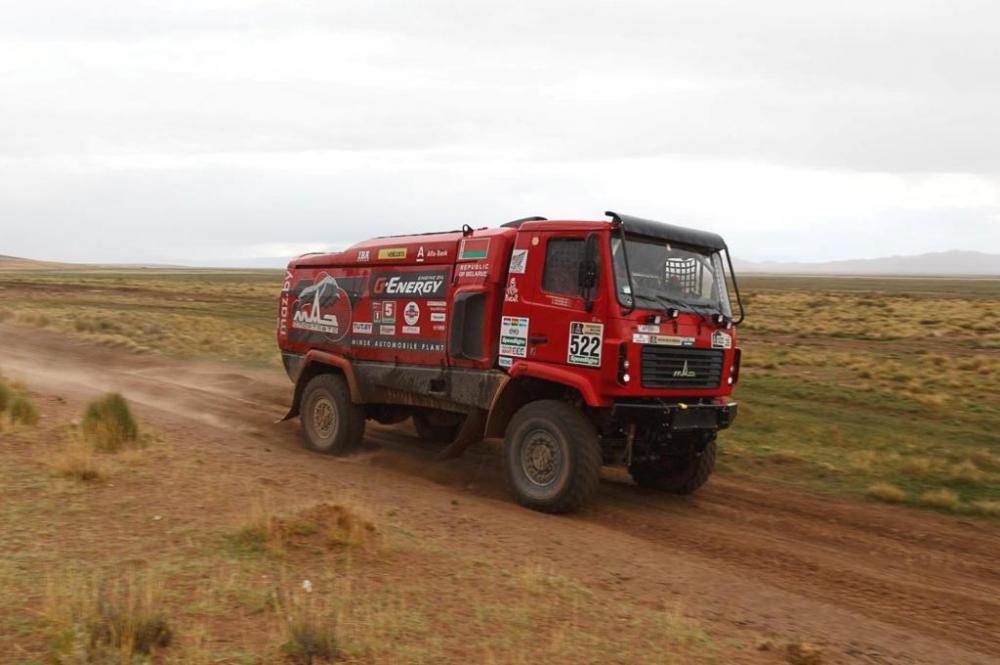
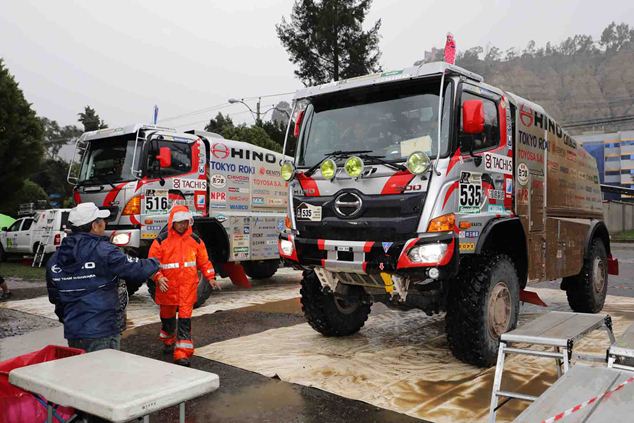

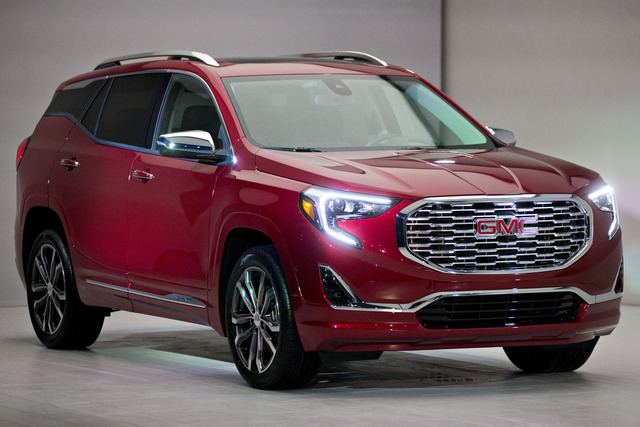

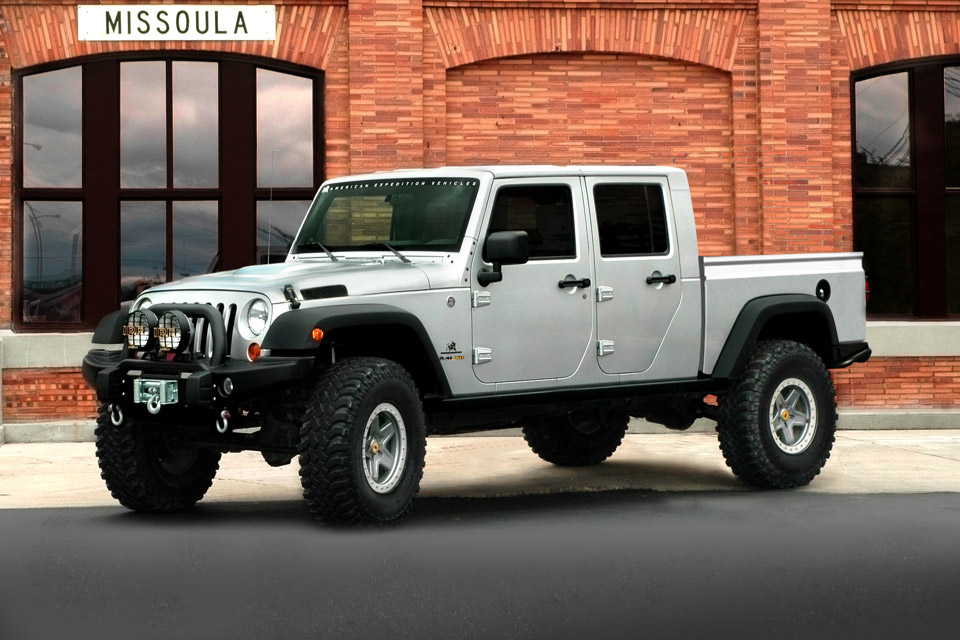
.thumb.jpg.d178b7927613f04a719ce5092acfdf09.jpg)
